The post Signal Usage appeared first on keendrivers.
]]>Most motorists believe the most straightforward and general way to signal is through their indicators, even if they do so incorrectly. Furthermore, there are numerous ways to communicate intentions appropriately that actually make much more practical sense. These types of indications include: direction indicators, brake lights, flashing headlights, reverse lights, horn, and hazard warning lights.
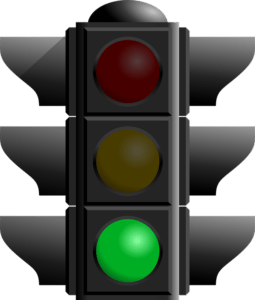
Of the many ways drivers indicate incorrectly, one of the most obvious instances is through poor timing. Timing really can be everything when indicating on the roads about certain intentions, and is amazing when done in an appropriate amount of time. This allows fellow drivers the chance to have plenty of time to react to driver’s intentions in whatever way necessary. Also, this type of thinking ensures that the driver is allowing themselves plenty of time to complete their manoeuvre in a safe and effective manner. How the driver decides to signal should be very clear, so it is important to avoid signals that could be deemed confusing to other drivers. Whether the driver is passing a parked car near a junction or approaching a roundabout, drivers can become confused if the driver isn’t using the proper protocol for signalling their next move. This also includes not signalling at all.
As a driver, it is important to realise that there will be moments when other motorists give off signs they don’t intend to. Sometimes drivers may not realise they have left an indicator on or are braking for an unnecessary reason. This is why it is so essential to be fully aware of surroundings and that fellow drivers may be unintentionally misleading. When approaching situations that could be confusing, it is important to only do so after scrutinising whether a driver is intending to carry out what they’re indicating or if it is just a mistake. Always approach these situations with caution as to avoid a possible collision.
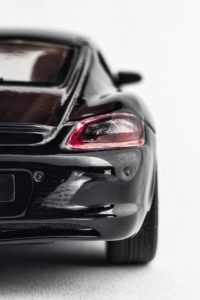
There are certain moments while driving where it will be a necessary to emphasise direction indicator signals and/or stop lights on the vehicle. This is easily carried out through the use of hand and arm signals, which are available in the Highway Code. Again, these signals are pointless if they are not used in an appropriate amount of time and done properly. This is when it is essential to be sure of when and what arm signals to use and that the arm signal is completely visible to other drivers. While these signals may not typically be used by motorist, drivers should remember that horse riders and cyclists will be reliant on these type of communication strategies when ever they are on the roadway.
Another important type of signal usage that many motorists are reliant on are flashing headlights. Many drivers get confused for when is the appropriate time to use their flashing lights. This is a type of signal that is regularly employed by motorist that may actually not be shown in the Highway Code. In saying this, it is important to note that flashing lights are meant to warn of the driver’s presence, and should not be used to signal that fellow motorists can safely proceed or turn. If a driver flashes their headlights at a fellow driver, it is important to recognise who the signal was intended for. It is essential to never assume anything on the motorway, and while we shouldn’t ignore this signal, it is always acceptable to properly observe the surroundings before acting. An appropriate time for drivers to use their flashing lights may be when they are on a road that is difficult to hear their horn, so it can be a good option to turn on their flashing lights or if the driver is behind someone who is unaware of their presence.
Warning other drivers may be a necessary when on the roadways. One of the best ways to do this is by using the horn. This is a great way to allow others to know of the driver’s presence. There are going to be multiple situations where the use of the horn is essential to warning fellow drivers. For example, a motorist may want to use their horn for when a person is driving forward or backward into their lane. Also, there are two worthy mentions of when horn usage has legal implications. It is actually illegal to use a horn if the driver is stationary and between the hours of 23:30 and 07:00 in a well populated area like most of Brentwood.
The post Signal Usage appeared first on keendrivers.
]]>The post Roundabouts appeared first on keendrivers.
]]> A roundabout is one of the best ways to help with traffic flow without making all the cars come to a complete stop. When approaching a roundabout, the view for the driver usually is open, meaning that they are able to look for gaps in the traffic that is going to let them approach and move on into the roundabout in a safe manner. If drivers are unaware of the rules of when engaging in a roundabout, then they may be opening themselves up to possible hazards and disrupting the general flow of traffic. Taking driving lessons with keendrivers means you will be taught all the hazards of driving and give you the skills you need to drive safely.
A roundabout is one of the best ways to help with traffic flow without making all the cars come to a complete stop. When approaching a roundabout, the view for the driver usually is open, meaning that they are able to look for gaps in the traffic that is going to let them approach and move on into the roundabout in a safe manner. If drivers are unaware of the rules of when engaging in a roundabout, then they may be opening themselves up to possible hazards and disrupting the general flow of traffic. Taking driving lessons with keendrivers means you will be taught all the hazards of driving and give you the skills you need to drive safely.
The fundamental rule of roundabouts is that the driver must give way to all traffic that is coming from immediate right side, because these cars are always going to have priority. It is common knowledge that the flow of traffic in a roundabout is always going to be guided by signs, travelling in one direction, with all cars going round the centre point. Of course, there are always contingencies to the basic guidelines. There are times that the traffic in the roundabout may have to give way to the vehicles that are entering, which is why it is always important to look for signage indicating ‘Give Way.’ Also, there are some roundabouts that are traffic light controlled, even at just certain times of the day, which means they can determine which vehicles are going to take priority.
Even though roundabouts are an amazing way to control traffic, they can be very hazardous if drivers are not looking ahead for warning signs that could indicate a possible hazard. Drivers must be aware of the advanced warning sign and the direction sign of the roundabout in order to have a well-defined understanding of the complexity of the junction ahead of them, as well as route directions. This means that it is extremely essential for drivers to pay close attention to the road marking signs both approaching the roundabout and while within the junction. It is important to always be courteous of drivers that may slow down to look at signage so that they can maintain a clear outlook on the direction they need to take. If the driver does not understand the direction they need to be taking on the roundabout, this could lead to them being confused, straddling lanes, and ultimately causing a collision. When a driver is accidentally in the incorrect lane, it is best that they do not change lanes at the last moment. Drivers should simply continue in the lane that they are in or go around the roundabout again in order to maintain safety.
Approaching the roundabout, the driver should always follow the MSPSL protocol (mirror, signal, position, speed, look) that should be practised at all junctions. To get through a roundabout in the safest possible way, it is essential for the driver to pay close attention to the signage and road markings leading up to the roundabout and during the junction, so they can be sure to pick the correct lane for their route. In determining this early, the driver is going to be able to understand the size of the roundabout and determine the speed and gear selection they need to approach the junction safely.
Many will say that second gear is the best gear to adjust to when approaching this junction, but really it is about what the driver sees that should influence how slow they need to go. If the traffic flow is heavy, they may need to shift down to first because they’re forced to come to a complete stop. Being selective with the gear choice is going to give the driver more control in the long run, so it is best to always be paying attention to each individual junction. Driving should be about control and while many people believe it is best not to change gears while within the roundabout, drivers may need to change gears in necessary moments to allow them ample control of their steering. Obviously, this is based on the size and when the driver is entering and exiting.
Regardless the direction the driver is going, there are always certain steps to follow. To go left, the driver must approach in the left-hand lane and keep in that lane throughout the roundabout. Whilst in the roundabout, the driver should maintain a left signal until exiting. Going ahead is a bit different. Drivers are not required to indicate on the approach, but once in the roundabout, it is courtesy to indicate with a left signal if the driver takes the first exit, just so others can know the driver’s intentions. This is when it is essential the driver thinks about their route prior to picking a lane. Overall, drivers should approach in the left hand lane, unless they are on a multi-lane road and have multiple options. It is also important to double check if the left lane is blocked by markings for the driver to continue on in this lane. On the roundabout, keep to the lane that is selected. Make sure to be checking the nearside mirror to have a grasp on the surroundings outside the vehicle. Once the driver has passed the exit just before their intended exit, they should begin to indicate left, giving other drivers the chance to know they will be going ahead. For going right, drivers will need to be in the right lane (or the marked lane) and indicate right on their approach. Drivers will stay in this lane, maintaining the right signal, until their exit approaches. Just after the exit before the one the driver intends to take, they will switch their indicator to the left so that surrounding drivers will know of their intended route.
Larger roundabouts can have more than three lanes in them. If this is the case, the driver is to use the more appropriate lane on the approach and throughout the roundabout. As far as the actual roundabout, the driver may need to move throughout the lanes earlier than was originally stated, but again, it is essential to pay attention to road markings and signage to follow the same procedures. Mini roundabouts may seem simpler than larger roundabouts, but it is important for drivers to always remember there is less space and time to consider their moves, so it is even more important they are ready to go when entering these junctions. Even more, there are certain areas that have double mini-roundabouts that should be treated separately. Remember the basics of giving way to the right and pay attention. The secret to every type of driving through this type of junction is defensive and observant driving in order to avoid collisions.
The post Roundabouts appeared first on keendrivers.
]]>The post Moving Off appeared first on keendrivers.
]]>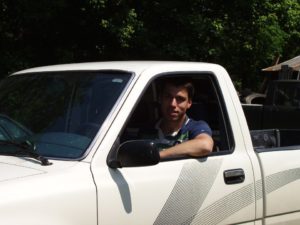
The most normal and common procedure, moving off is something that we do very often in every trip we take in our vehicles. Ranging from the typical forward manoeuvre to moving off from more complicated angles around stationary structures, moving off can cause a lack of confidence and nervousness for any new or experienced driver. Because of the feeling of paranoia many drivers encounter, they either rush or fail to practise this manoeuvre, meaning they have the tendency to make mistakes all throughout their driving career. Given that this is a basic technique that really just requires proper protocol, practise, and a bit of confidence, moving off is a skill set that every driver really should strive to master.
When beginning all move offs, it is essential to always carry out basic safety checks of the vehicle; this means that the handbrake is engaged, the car is in neutral, and the engine is running. Start by pressing and holding in the clutch of the vehicle with the left foot. It is always advised to put the car into first gear because this is a more powerful option that will ensure the vehicle moves more efficiently. Once the car is in first gear, lightly step on and hold the accelerator with the right foot, with the heaviness of the foot pressure being contingent on outside factors like the type of road, the demand of how quickly the move off needs to be, and the accelerating power of the car. As drivers get more experience and confidence with driving, it will always be the better option that they hold the pedals of the car steady as they move off, with this being easily achieved by placing the heels of the feet on the floorboard to balance against the pedals properly. As the driver keeps inching forward, they must slowly and steadily allow the clutch to rise to the ‘biting point’ while maintaining complete stillness with the other foot. They may feel alarm as the engine noise will typically fall and the front of the car will rise up, but this is what they are after.
When it comes to moving off at an angle from behind all types of obstructions, the procedure that the driver is meant to follow is practically the same as what is previously described, but they are forced to consider what angle is best to get their car out the safest. Depending upon the distance between the driver’s car and the obstruction, it is always necessary for the driver to consider whether it is better for them to continue forward or put their car in reverse, the closeness of the other car, the oncoming traffic, and the speed at which they must accelerate to meet the same speed as the flowing traffic.
One of the most frightening techniques for drivers to master is moving off up hills because there is always the possibility they can roll backwards. It is essential that drivers learn to coordinate their pedals. While this is very similar to moving off on the level, there are two major differences: the driver will be required to accelerate more and the clutch will need to be raised slightly higher than the ‘biting point.’ When raising the clutch, it can make the car shake, but if this happens then just push the clutch back in and start over. This is the point where drivers tend to panic, but it is important to stay calm. Moving off up hills properly means at this point the driver must hold the brake still so that the vehicle can’t move forward until the driver has made sure it is safe to do so. Raise the clutch to the biting point, conduct observation checks, and lastly control the accelerating pedal with the right foot to move forward. Moving off downhill is always going to be easier because the driver has the weight of the car assisting them to go forward. The driver should be paying attention to the car so that it can’t go to quickly. The best way to achieve this is to put the clutch in entirely, place the car in the best gear for the steepness of the drive, press down the footbrake, and let the handbrake go.
Time and practise will teach all drivers what to look for, with inconsistency and rushing causing drivers to stall their car. It is always important for drivers to be aware of their surroundings, looking about them in a very regimented order. Before taking off, it is advised that drivers start by checking their left shoulder, left door mirror, forward, their interior mirror, right door mirror, and lastly their blind spot. Drivers should be on the look out for pedestrians, bikers, other vehicles, or any type of possible precaution. With every type of moving off the driver engages in daily, it is important to always consider observation and safety checks of their surroundings before committing to any moving off manoeuvre.
If you’ve found this blog post useful, but want some more information – feel free to contact us or look on the official government website for the guidelines to moving off.
The post Moving Off appeared first on keendrivers.
]]>The post Forward Observation appeared first on keendrivers.
]]>
Too often, drivers are unaware of what is going on all around them, and will depend on quick glances to make hasty decisions. This can result in many terrible outcomes, so it is important to build a solid foundation on effective observation. There is only so much a person can take in within a glance, so constantly scanning the environment is pivotal for creating a mental picture of the landscape surrounding the vehicle. Skimming the environment surrounding a vehicle for hazards and risks is one of the best ways drivers can stay on top of their safety. This is ultimately going to reduce the risk of having to brake unexpectedly or having to come to a complete stop. Checking and rechecking distances, middle ground, foreground, sides, and the rear on the perimeters of the vehicle should become a constant in the daily driving practises of all drivers. Bad habits can form if the driver is only concentrating on a single space, because they are blindly looking forward and missing problems that could possibly be rising around them.
One of the most important parts of our vision when driving is a person’s peripheral vision. This is the line of sight that is surrounding the central area of our more defined image. While what we see may not be as defined as what is directly in front of us, we are able to recognise movement from these areas which can be essential on the roadway to help make judgements. Zone vision is what a person sees when they are looking forward and from side to side. When approaching a junction, the driver’s zone vision will gradually improve the closer they move forward, allowing them to make the judgement call to know if it is safe to proceed. When approaching junctions, it is important to recognise that certain things are difficult to spot. This means it is essential to pay attention for pedestrians that cross at junctions, cyclists that can be out of the line of sight, and motor cyclists that can be approaching much faster than vehicle drivers. Know that if another road user isn’t in the zone of vision of the driver, then the driver isn’t in their zone of vision.
Another key component to forward observation is speed. When drivers are going fast, they must look further ahead. Drivers must remember that as they accelerate their speed, they must adjust their sight further than where it naturally settles. At heightened speeds, drivers can only take in so much of the foreground details the faster they go. When they slow down, their ability to take in more of their foreground increases, so it is important to understand this when adjusting speeds. Slower speeds in congested areas aren’t only essential for safety, but also because drivers can only take in certain amounts of information in places like town centres. This means that going slower in spots like this allows the driver’s brain to compute more information, in turn making everyone more safe.
If you have further questions, look them up in the Highway Code or contact us and we’ll be happy to answer your questions!
The post Forward Observation appeared first on keendrivers.
]]>The post Clutch Control appeared first on keendrivers.
]]>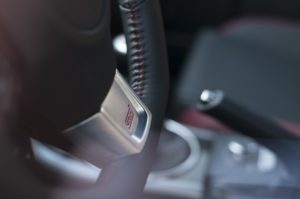
Clutch control refers to when the driver confidently holding the clutch pedal down when steering at a slower speed, with the driver only gaining clutch control with practise. One of the biggest issues with learner drivers is that their training doesn’t necessarily guarantee that they will have all the appropriate opportunities to properly learn clutch control, lending itself to the fact that they may decide to drive automatic cars because it can be seen as the easier alternative. Furthermore, for drivers that do drive a manual vehicle, if a driver resorts to slipping the clutch in order to compensate for being in too high of a gear at a lower speed, this is a bad habit that drivers should always avoid. One of the best ways for drivers to avoid bad habits is to have a complete understanding of what the term ‘biting point’ is referring to. When driving instructors refer to the biting point, they are talking about when the two clutch plates are coming in contact (i.e. biting) which in turn, causes the load that is placed on the engine to increase. Learning to sense the biting point is a pivotal part of drivers learning clutch control. Even more, it also ensures that the car is being driven properly because the clutch plates are able to fully engage in a smooth and effective manner. When the plates are brought together too fast, the engine can stall and/or the vehicle can jump forward. Drivers must learn to practise and judge when the biting point of the clutch plates are engaged, with one of the surest ways being when the front of the car lifts up and the sensation of the engine speed diminishes.
Every car is different which means the feeling of every clutch is different, but there are certain exercises drivers can partake in that will help indicate the biting point of the clutch. Locate a particular area that is void of distractions and heavy traffic. Begin by slowly lifting the clutch in order to gauge how the car lifts and the engine is manipulated. Once the driver feels comfortable in finding the biting point, they are able to practise clutch control of that vehicle by going forward and stopping, and only slightly raising the clutch pedal. This will make the car move very slowly, which is a key part for this exercise to work properly. It is best to practise this in a level area, avoiding hills going up or down. This practise will let drivers test the clutch of any car and evaluate the best ways to manoeuvre that particular clutch for that vehicle. There are quite a few hills in Brentwood so if you’re going to take your driving lessons there, you’ll get plenty of practice using your clutch on a hill!
The post Clutch Control appeared first on keendrivers.
]]>The post Bay Reverse Parking appeared first on keendrivers.
]]>
Car parks are overcrowded accidents waiting to happen. Too often, drivers run into all types of misfortunes in car parks when they are reversing out of their parking bay. That is why it is so important to teach the benefits of reversing into parking spots so that the driver is able to pull forward. One of the advantages is that it is much safer to reverse into a space that the driver is able to see into, rather than reversing into an open area that is impossible for the driver to see completely out of. Cars are also easier to control when they are going forward than when they are going backwards. Furthermore, reversing close to a wall or another vehicle will make it much harder for thieves to gain access to the boot, and if there is ever an instance that compromises the safety of the driver, they are able to get in a pull away much more quickly.
Knowing all of the positives of reversing into a parking bay, one has to wonder why most drivers pull in straight? First is because it is ‘easier’ to pull in straight, but secondly, most people aren’t aware of how to properly reverse into such a narrow space. This is a manoeuvre that was only recently included into the driving test, so it makes sense why so many drivers aren’t well versed in the proper way to reverse into a parking spot. This is especially apparent for smaller car parks where drivers don’t believe they have enough space to complete the reverse parking technique.
Reversing into the space should be approached by analysing the surroundings around the vehicle. Drivers should first grasp how busy the car park is so as not to inconvenience other motorists. Once finding a space that could allow the car to fit, it is more important to make sure there will be enough room to adjust the car to backing into the space properly. Reversing into a bay from the left is beneficial because the driver is able to have a clear line of vision over their left shoulder. When picking this option, this also means that the driver will require less space too, so it is the overall safer method.
When reversing from the left, this skill set will depend on many of the strategies the driver has already mastered when reversing around a corner, so there is less risk or stress involved for the driver. Since the driver will drive past the actual parking space, it is important that they signal their intentions so other motorists aren’t too confused. Going slowly will give the driver the chance to position correctly. They should be striving to be about one metre from the end of the bay and one car length past the space. From here, drivers must be sure to look all around them for other cars or pedestrians that could pose a possible risk, starting with the right shoulder and checking every point until the left shoulder. Reverse in a straight line until the back of the car has just reached the bay before the desired spot, and then double check the surroundings before turning the vehicle. Start to slowly manoeuvrer the car by steering the wheel quickly to the right. It is essential that the car is moving while steering this fast so there is no dry steering during this procedure. The car will enter the desired space cleanly, and as the vehicle is on the straighter path, turn the wheels to the opposite direction to fully make sure the car is in the bay straight. Before exiting the car, realign the steering wheel to the straight position for moving forward properly.
Another more common way to reverse the car is by looking through the rear window. Most people find this option easier, but it is only possible if there is enough room in the car park to pull forward far enough in front of the targeted bay. Drivers must have enough room to steer the car in front of the desired space to where the entire back of the car is in route to be reversed properly. Depending on the available area, this can be difficult. After positioning the car, make sure to double check surroundings before placing the car in reverse safely and steadily. As the car begins to reverse into the space, it is essential for the driver to remember that the act of shunting to fix the car’s position between the lines has to be done before the car enters the bay. If this isn’t done prior, then the driver runs the risk of hitting the cars on either side of their vehicle.
Drivers must also remember that it is completely acceptable to move their mirrors before beginning these procedures. It is more important to not become to reliant on mirrors, because this can create bad habits of motorists not conducting overall observational checks all around the vehicle. This is so vital because not everything is going to be visible in the mirrors of the car! Getting too comfortable during any part of driving is when accidents tend to happen, drivers that get in the habit of reversing into car bays challenge themselves to stay on their toes.
Again, bay reverse parking is one of the main tactics to learn as a driver for many reasons. Safety while driving is a huge responsibility for all parties, and car parks are a haven for possible disasters. With small children walking about with their parents, distracted pedestrians, thefts, and the general unknown, it is always best to take as many precautions as possible for such uncertain moments in life. Reversing into car bays have finally made their way onto the driving test because of the many advantages this procedure poses, and it is really important for drivers to be aware of both common options when reversing into their spaces. Creating and maintaining the safest environment possible in car parks is essential for everyone, and this is just one good practise and habit all motorists should include in their daily ventures.
The post Bay Reverse Parking appeared first on keendrivers.
]]>The post Approaching Junctions appeared first on keendrivers.
]]>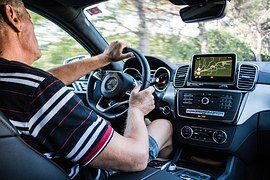
Many drivers can become overwhelmed and intimidated at the thought of approaching junctions that are busy, but it is important to instil knowledge and confidence to avoid accidents and panic. In the simplest definition, a junction is when two or more roads come together, and can vary in type, view, and difficulty. Junctions in a neighbourhood are going to be much less complicated than junctions on major motorways; however, the driver has the responsibility to remember that even the most insignificant junction can pose a hazard. This means they must always be prepared for risk and the unexpected, regardless of how simple it may appear to be. A driver will encounter five different types of junctions while driving: T junctions, Y junctions, staggered junctions, crossroads, and roundabouts. Every type of junction listed can vary in size and difficulty on the roadway, but understanding the basics of approaching each is going to be the biggest benefit for everyone on the roadway. One of the fundamental aspects of approaching any junction is knowing ahead of time what the driver needs to do after getting past the junction. For example, this could mean knowing whether a driver must continue on the main road or if their path requires them to go in a different direction after getting through the junction. Before reaching the junction, most roads will have signs indicating what the driver is to expect as the continue forward, so it of the utmost importance that the driver constantly pays attention to the road markings. Even more, if there are no signs indicating the priority of the junction ahead, driver should proceed with even more caution.
If the driver is turning left from a major road to a side road, they must be sure to know what type of junction they’re approaching while also looking as far ahead as possible for distance, obstructions, and possible hazards. After identifying the basics, the driver must then check their interior and left mirrors to gauge the speed of the surrounding vehicles (including cyclists) behind and beside their car. Alongside checking this, the driver should be sure to indicate their direction so the surrounding parties are aware of their intention before the make their move. Next, it is best to think about the manoeuvring of approaching a junction in multiple phases.
It is important for the driver to solidify their position when they employ their signal. This means that the driver should be in the left lane with their nearside about 1 metre from the kerb (this may fluctuate depending on the size of the road). To ensure that the driver does not mount the kerb, they must be sure that the front of their car is level with the start of the corner before making the turn. This is important because drivers can severely damage their car if they turn too quickly or too late. Next, the driver needs to adjust the speed of their car so that it is on par with the sharpness of the turn and width of the road ahead of them. This will help the driver to not overcompensate, taking their car for too wide of a turn. Gauging the speed and correct gear to be in before turning will help the driver maintain control, and there will often be signs to assist the driver in knowing how fast and wide the approaching turn is. Finally, the looking phase of making a left turn should always be applied, even if the entire view of the road that the driver is turning down isn’t clear until they completely make the turn. When following through with this, it is essential that drivers are looking out for any possible hazard around them.
Turning right is very similar to turning left, with slight differences that should be noted. When going right, drivers should attempt to be as close to the centre of the road as possible in order to allow other cars to pass on the left. When on a one-way road, make sure to move to the furthest right hand side where road markings can help with the exact choice. It is always essential that drivers be away of all types of oncoming traffic, whether that be cyclist or motorists, as they are often a lot hard to see than larger vehicles. If there is ever any doubt about whether the driver can make a turn, then the best rule to follow is if they could walk across the street safely, then can probably make the turn safely. Do not change speed as that can have a negative impact on others, and if there is ever any doubt, it is always best to just wait. Again, always be on the look out for any type of possible hazard or obstruction that could possibly be ahead.
The post Approaching Junctions appeared first on keendrivers.
]]>